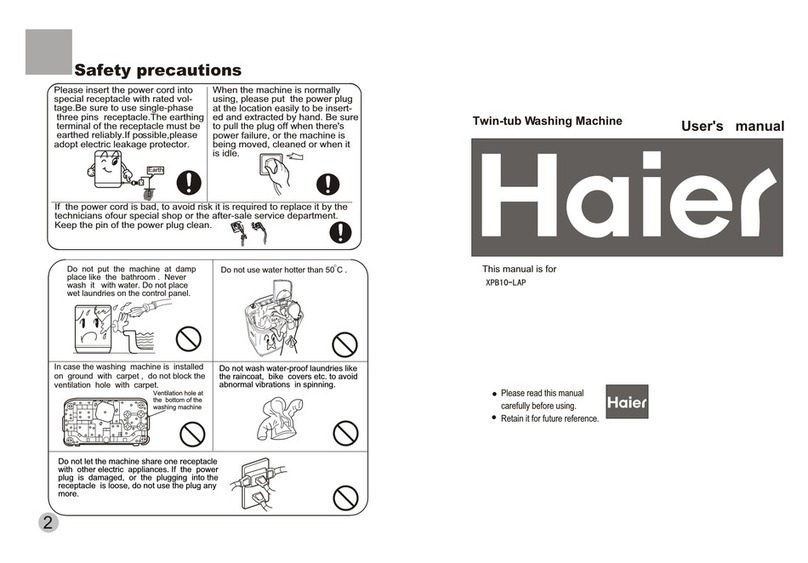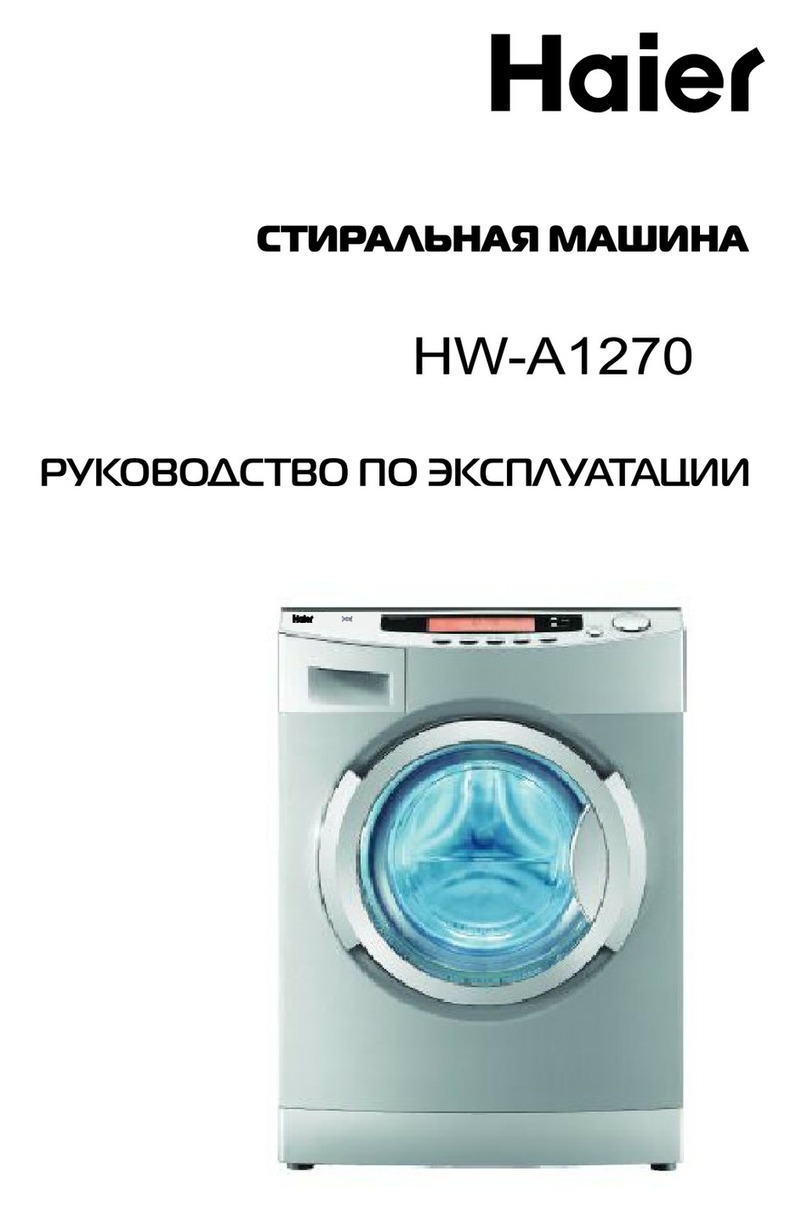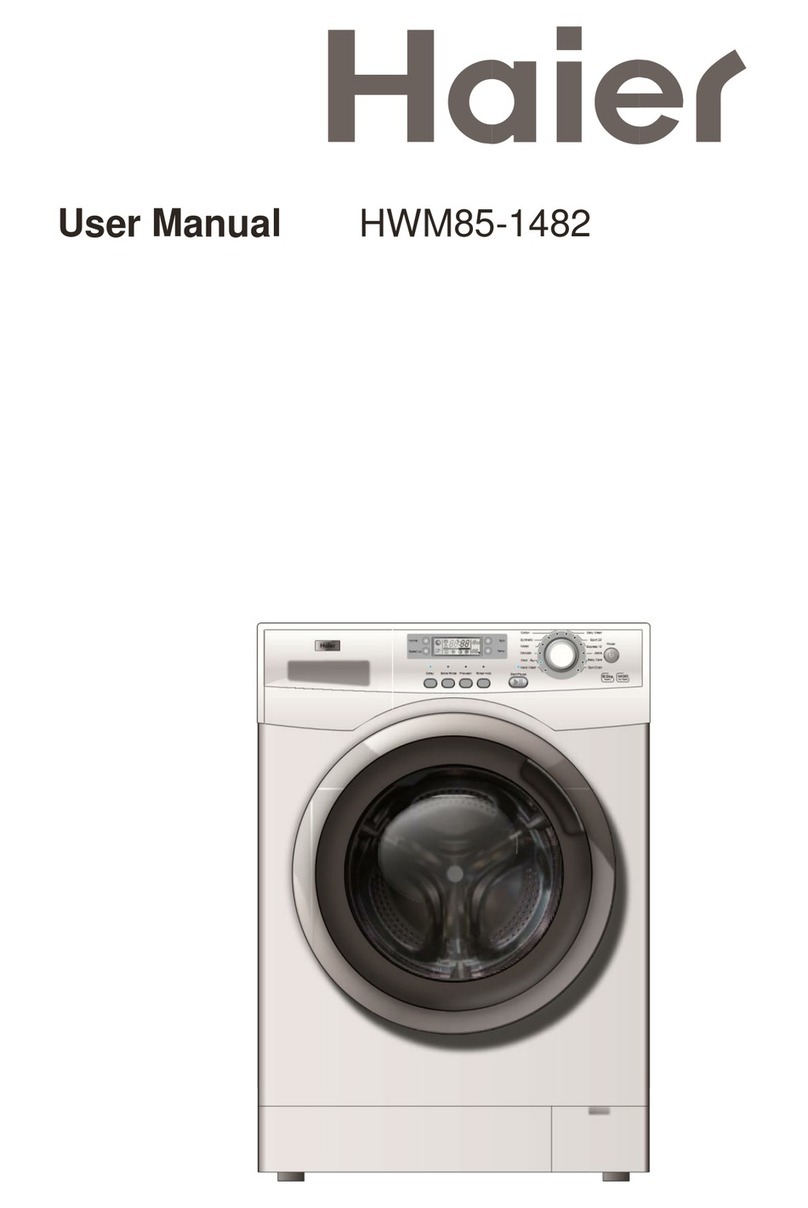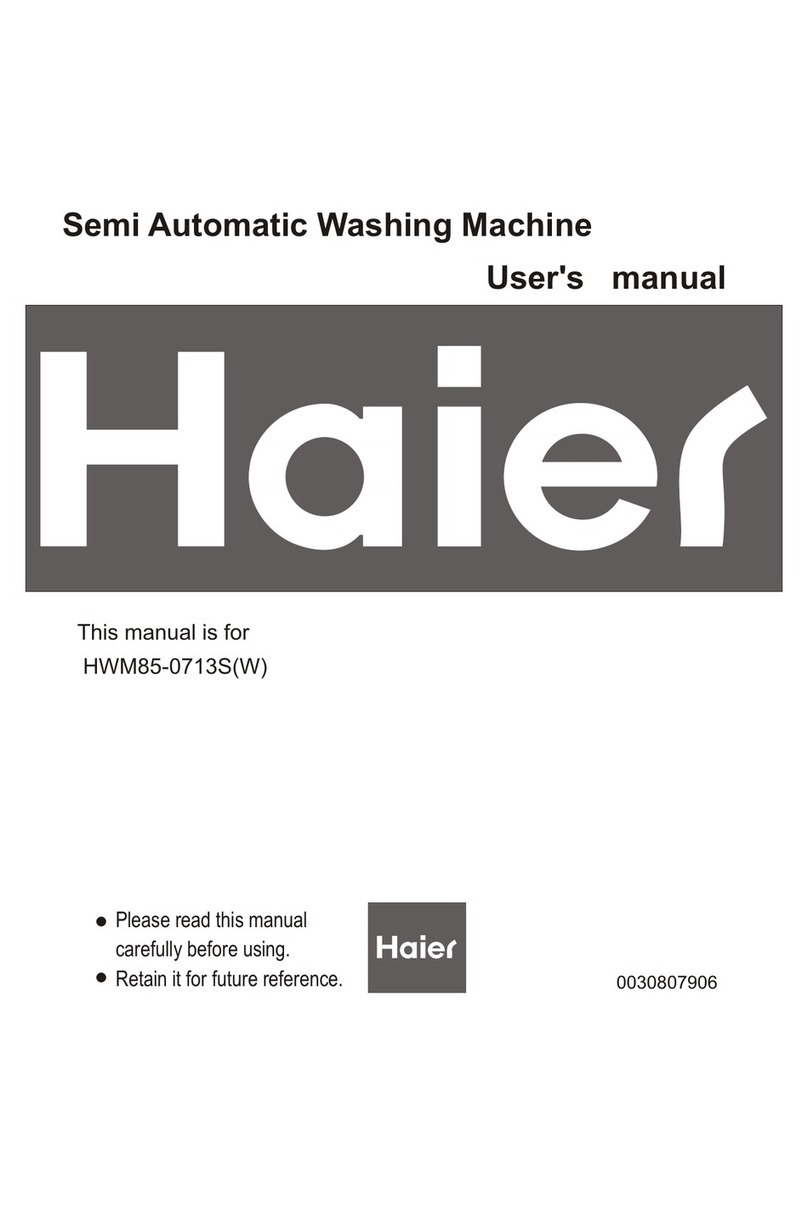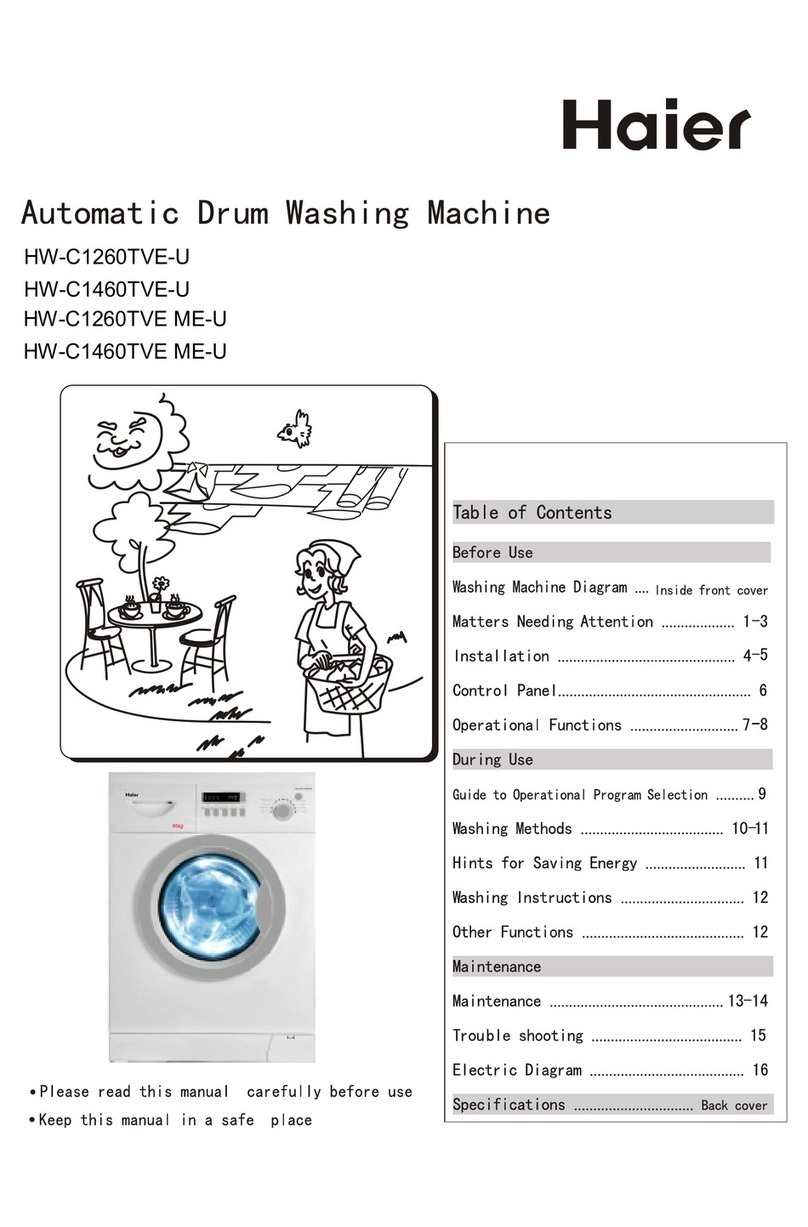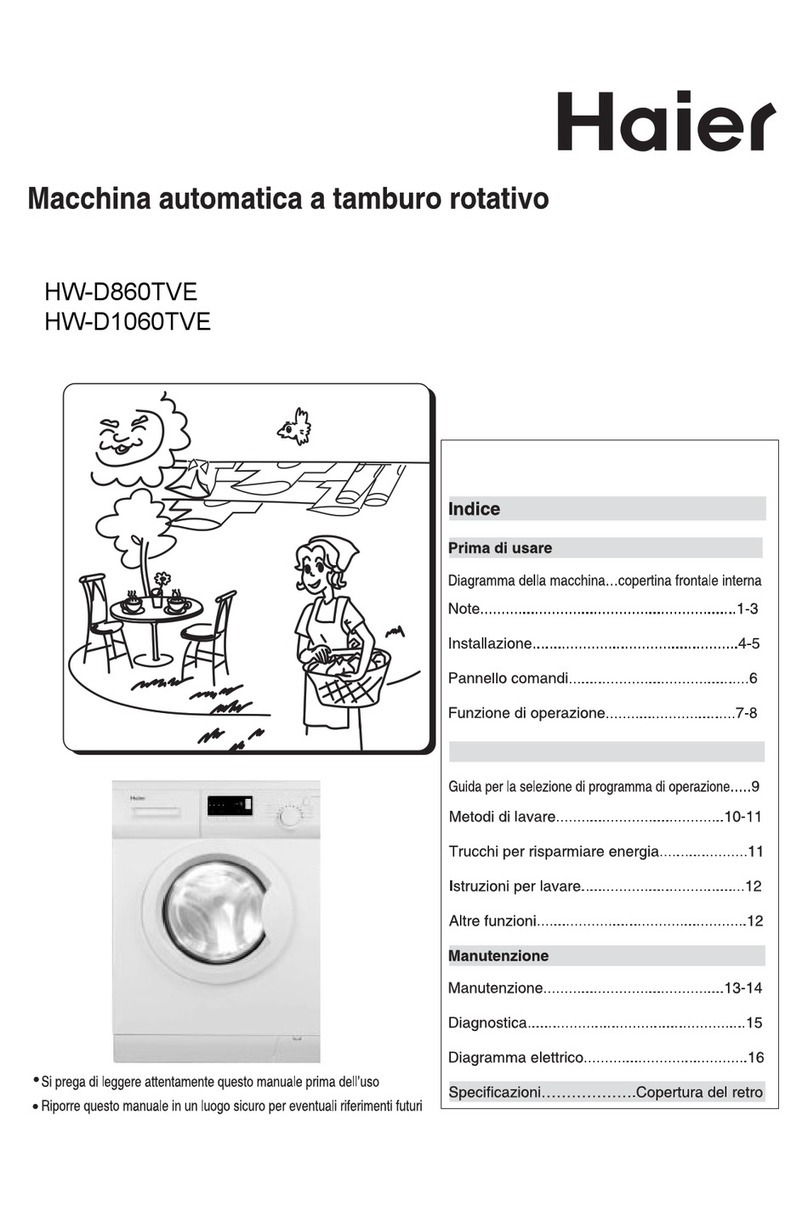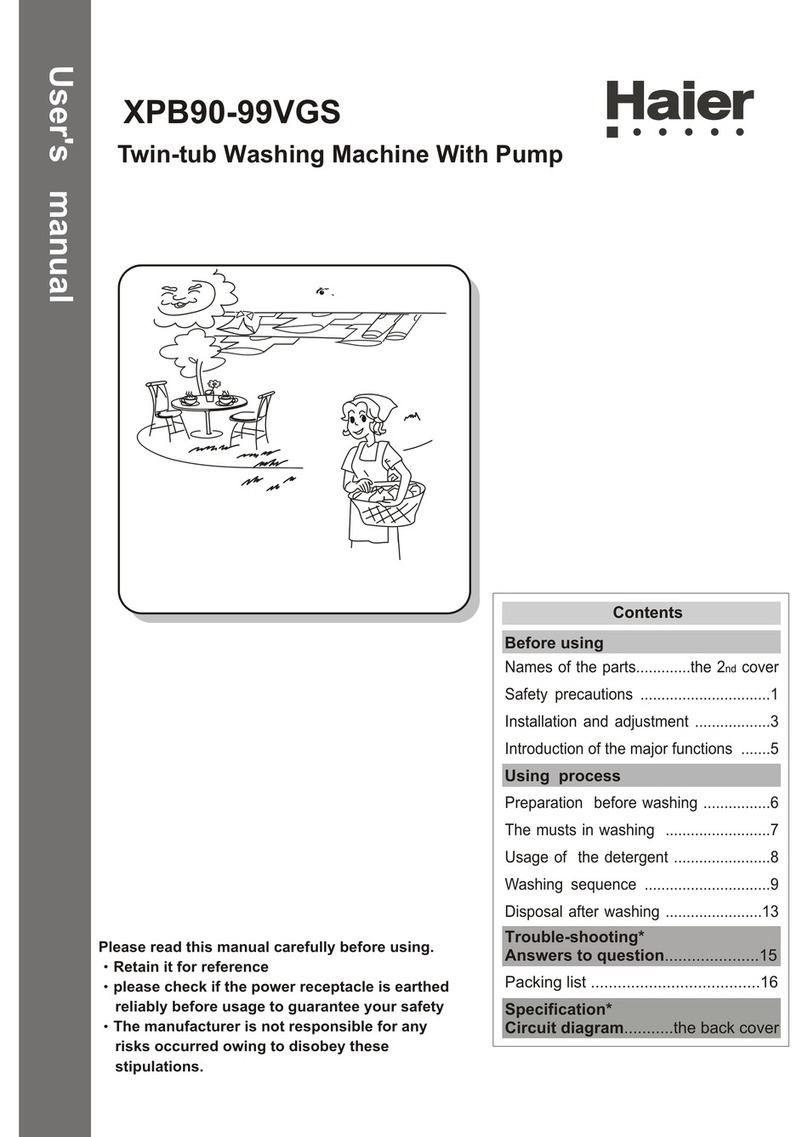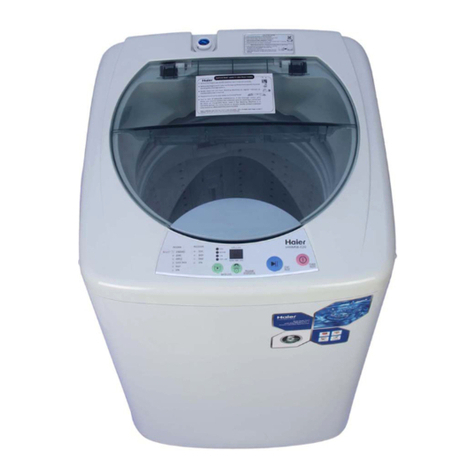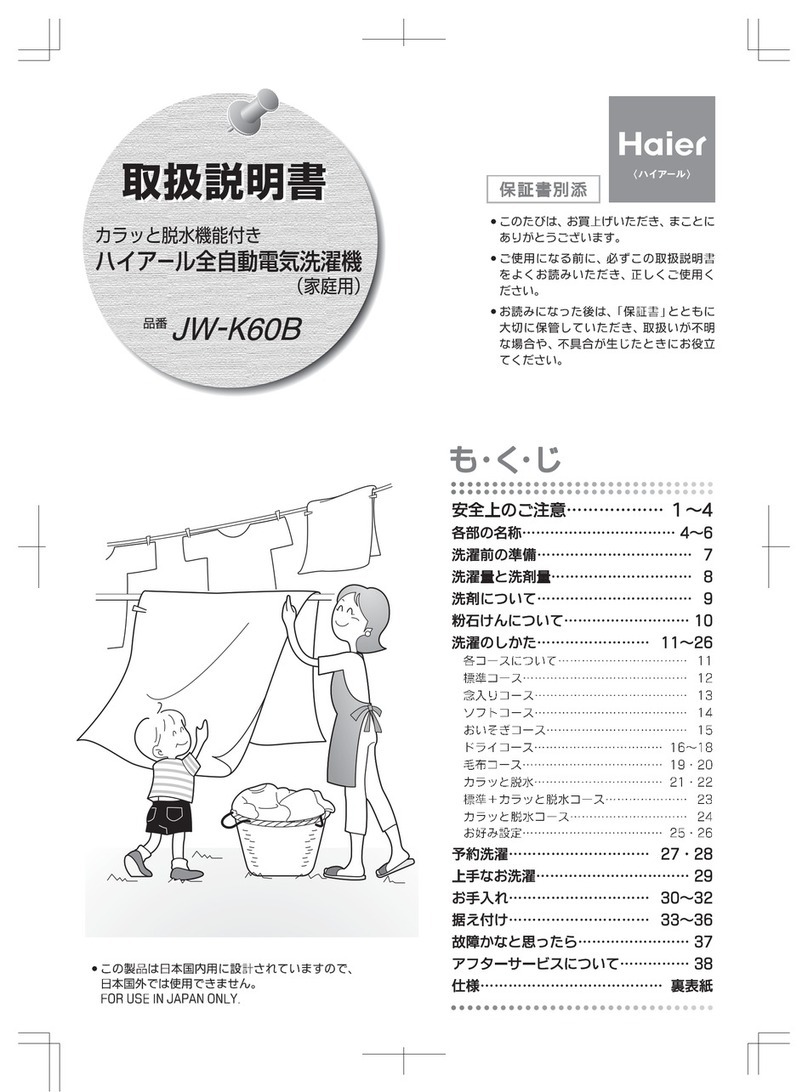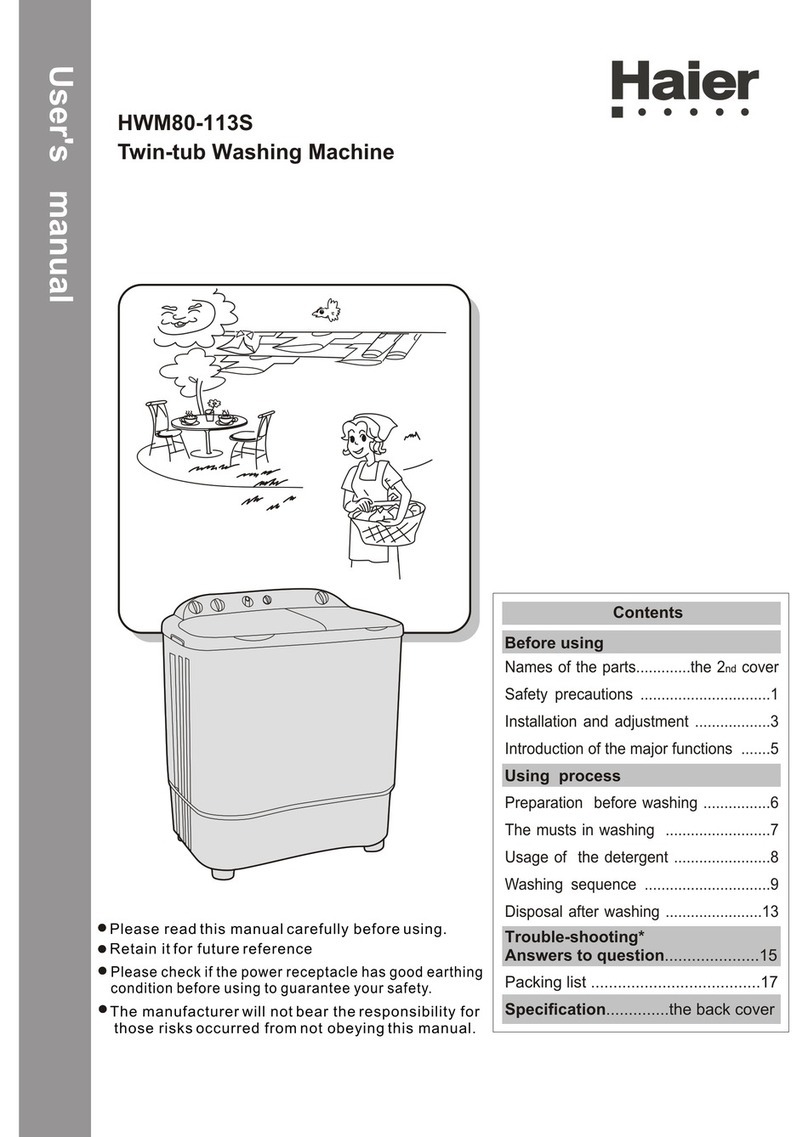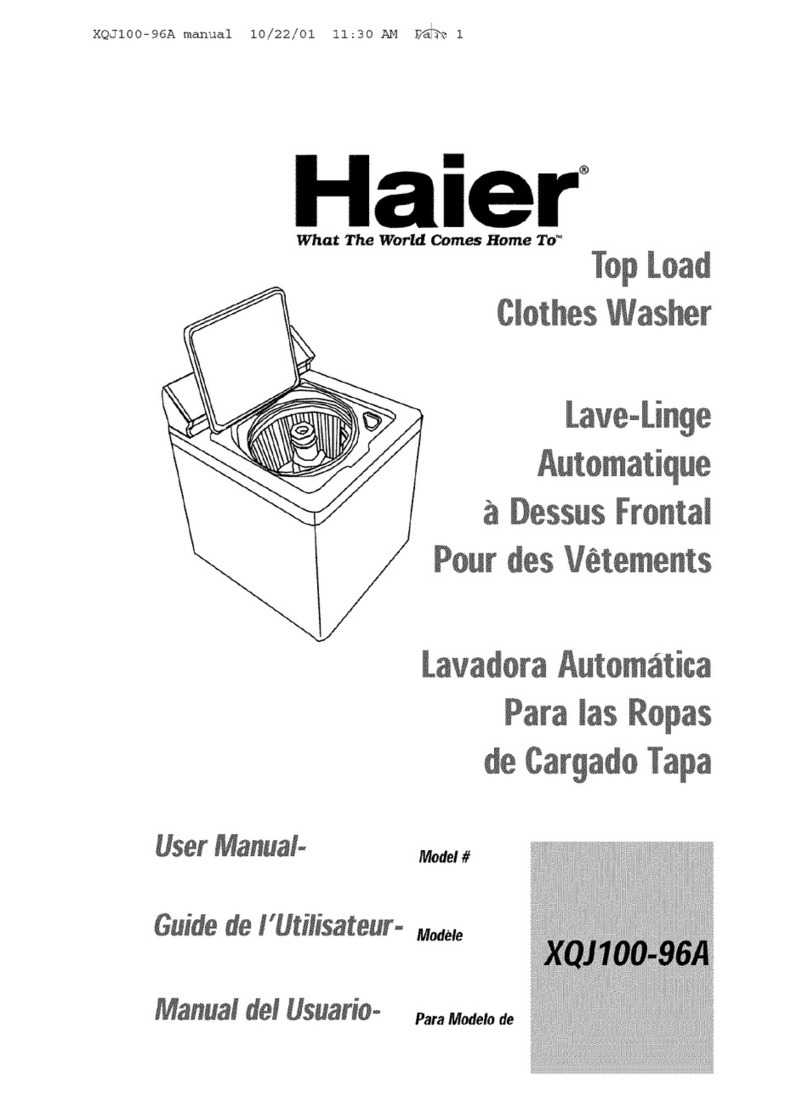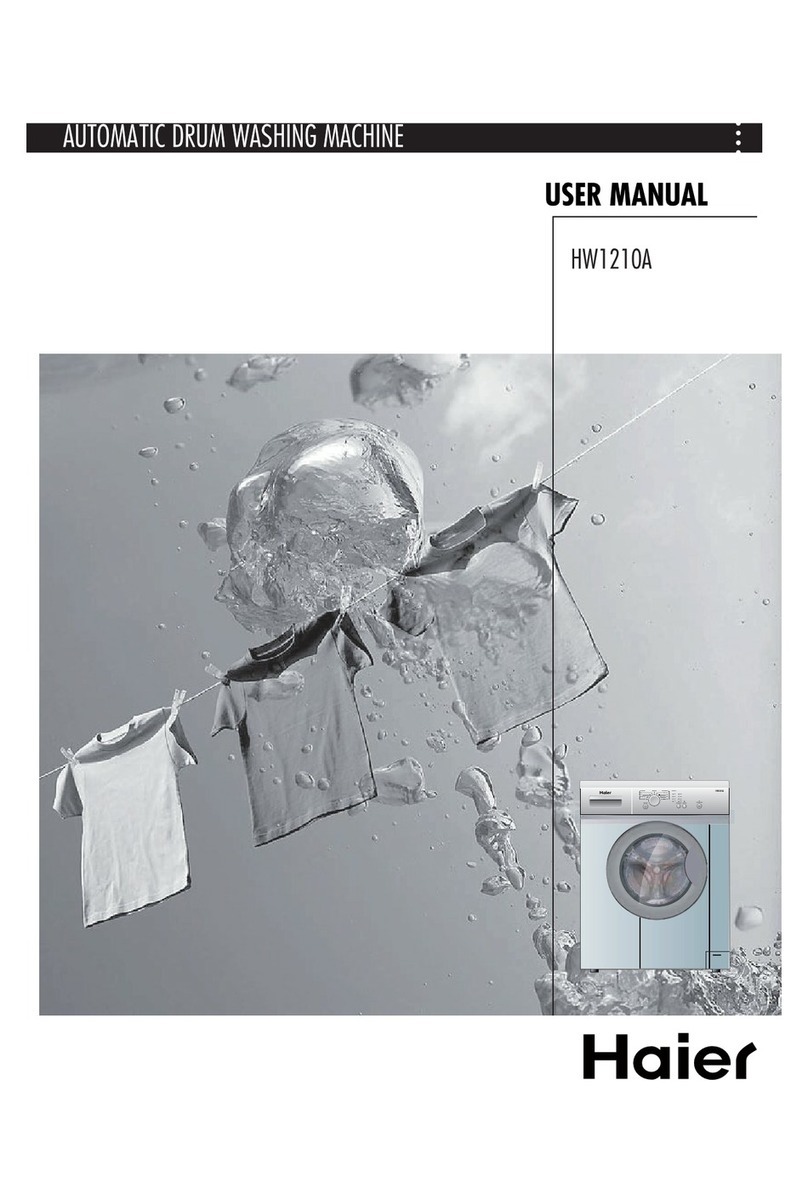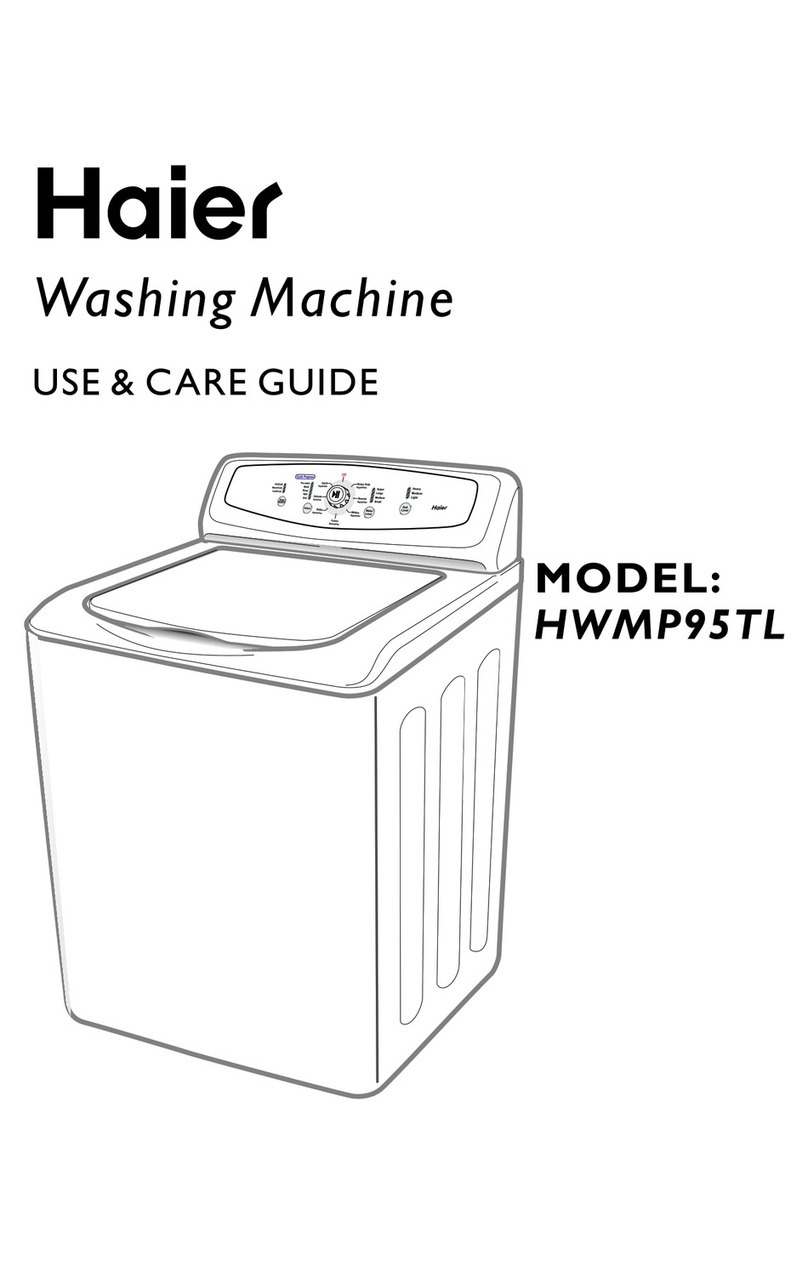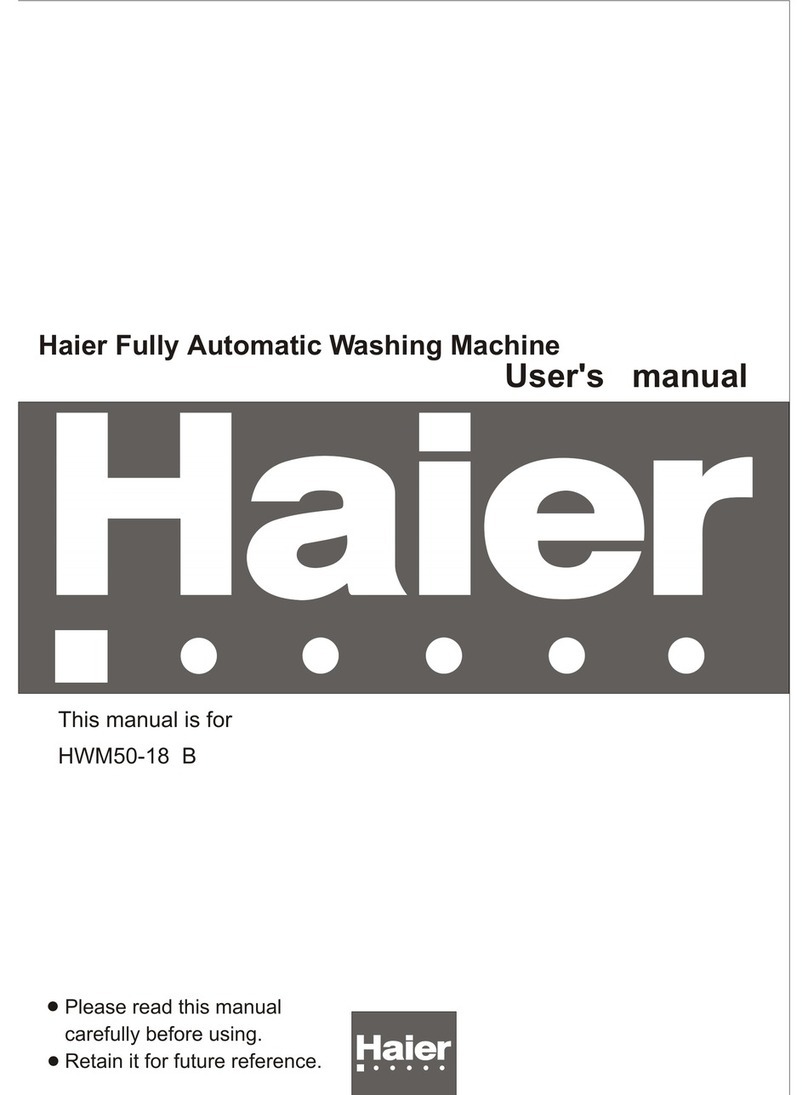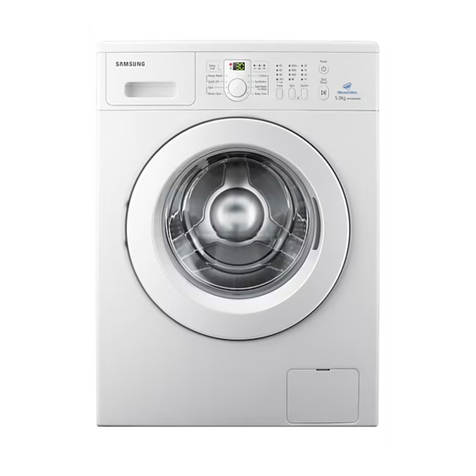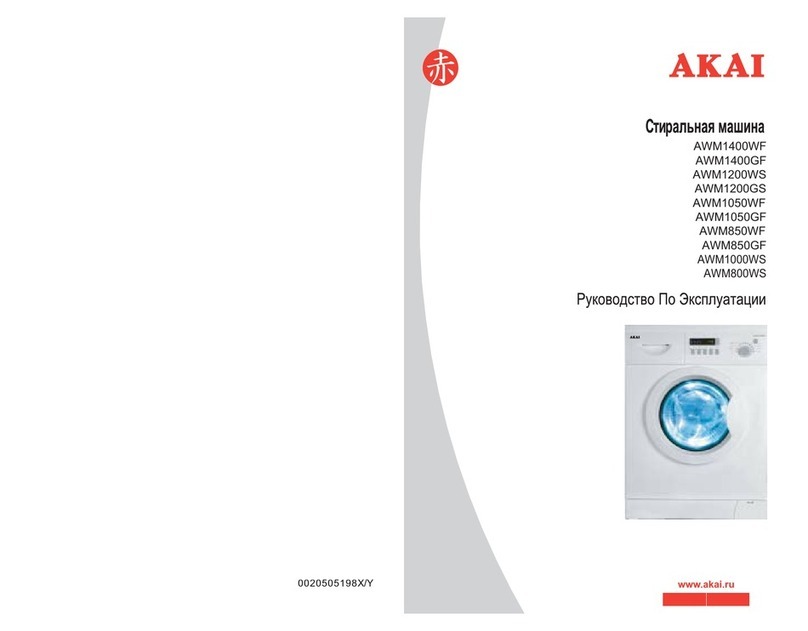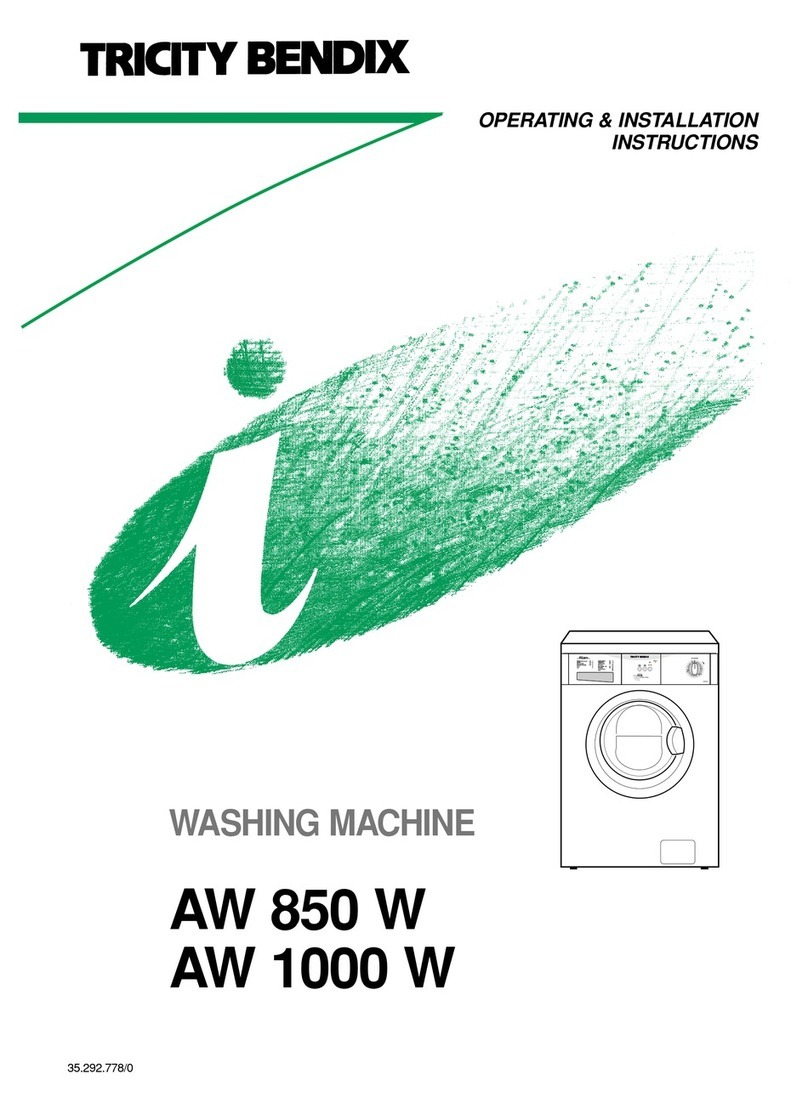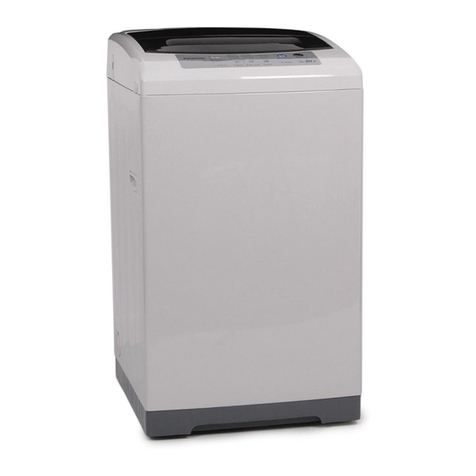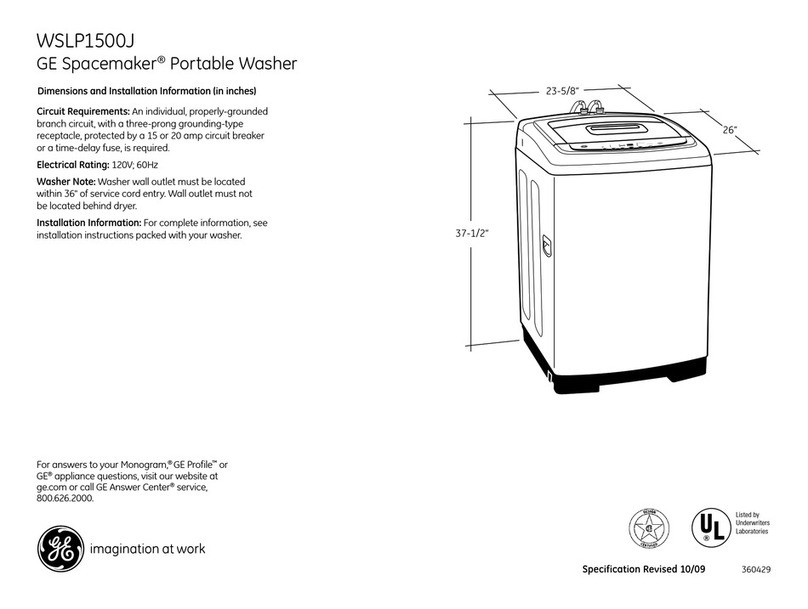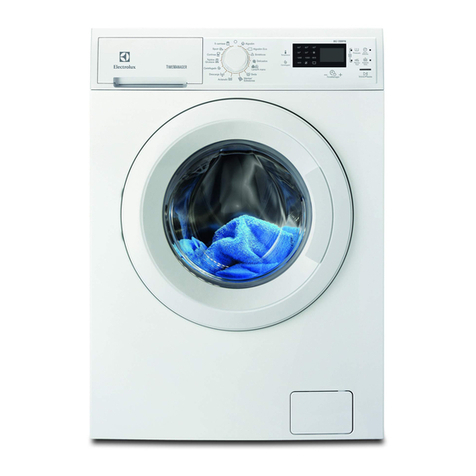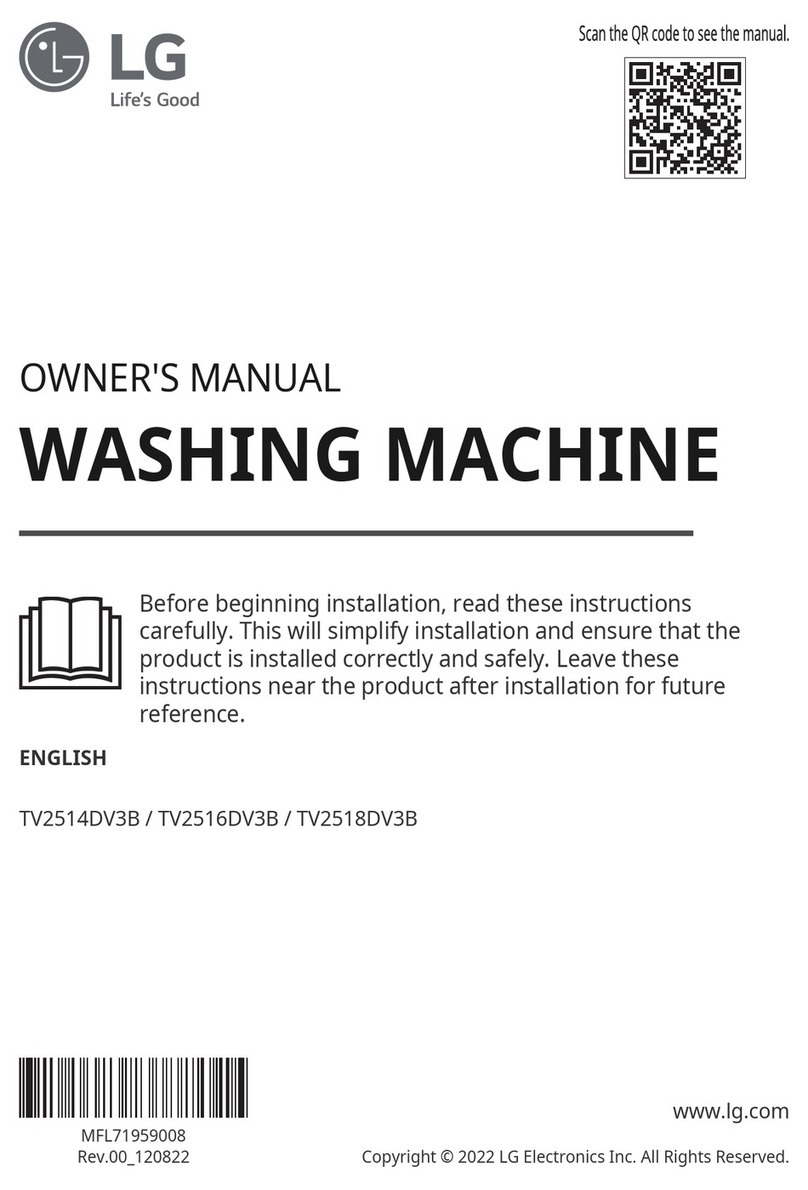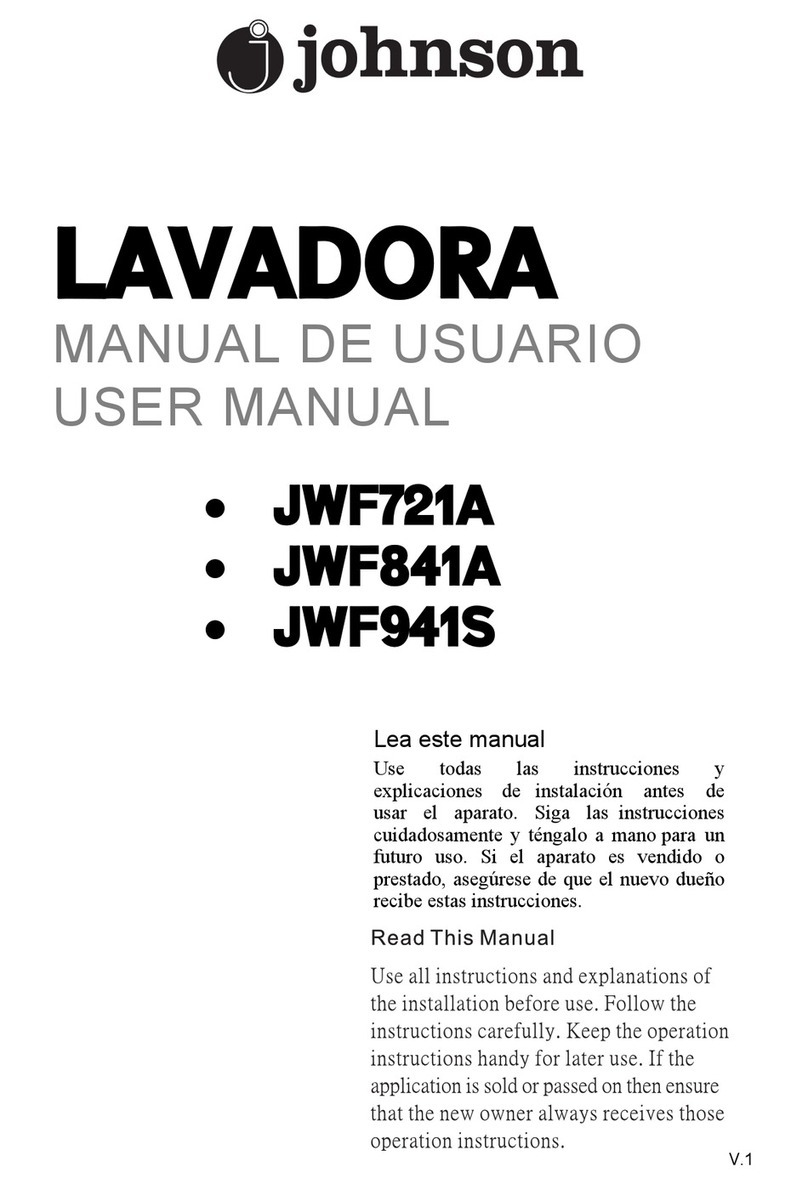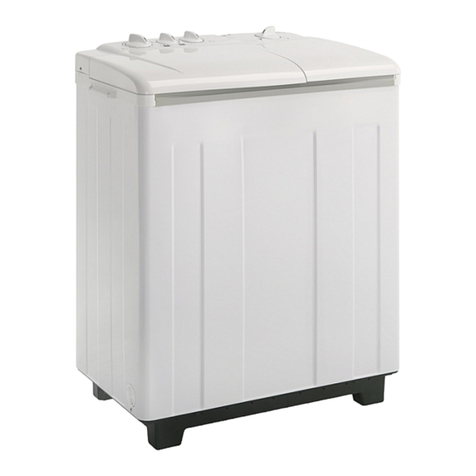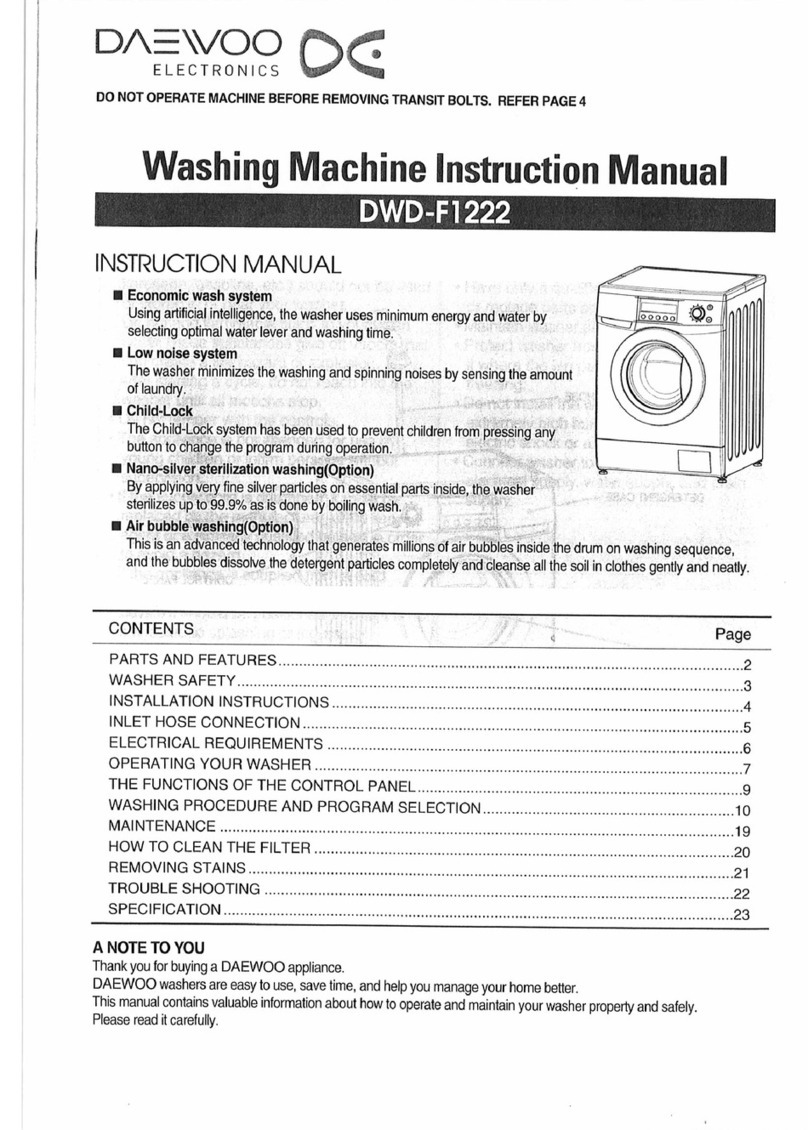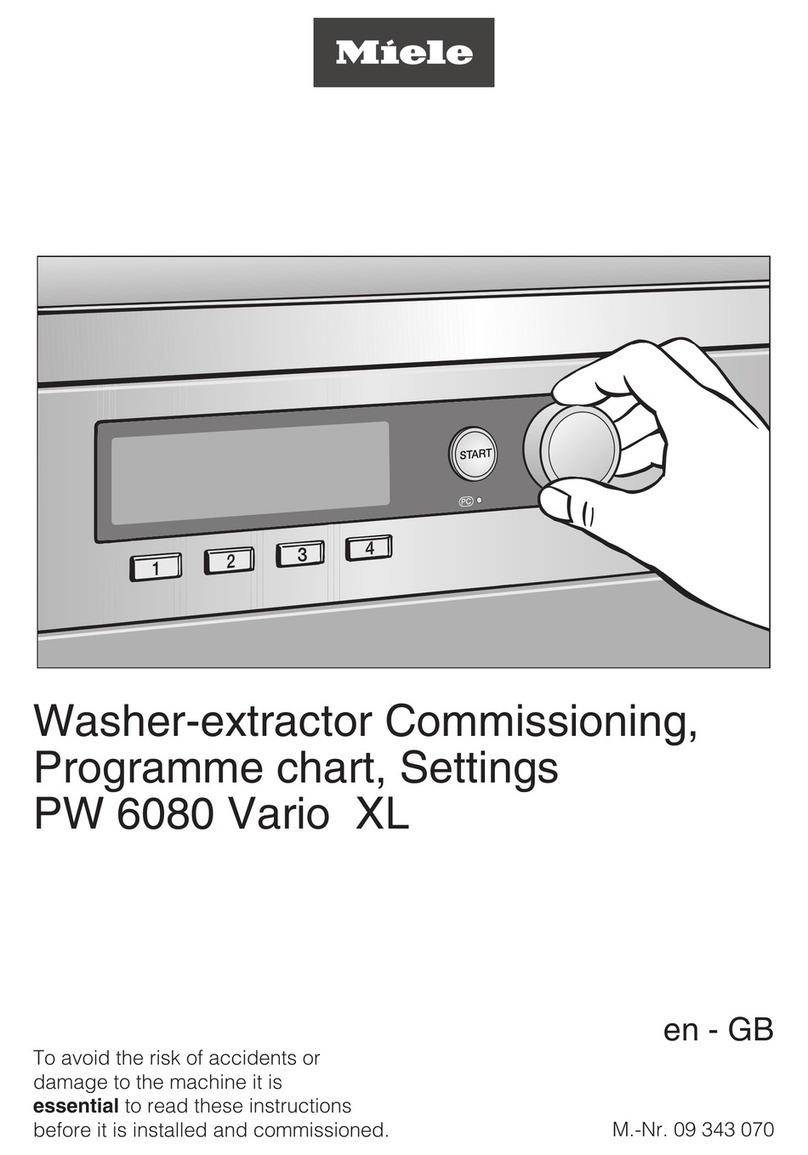Usage and Maintenance Warnings and Precautions
WARNING
Do not let children or infirm persons use this washer unsupervised.
- Failing to do so may result in electric shock, burns or injury.
Do not attempt to repair, disassemble, or modify the appliance yourself.
- Do not use any fuse (such as cooper, steel wire, etc.) other than the
standard fuse.
- If you need to repair or reinstall the appliance, contact your nearest
service center.
- Failing to do so may result in electric shock, fire, problems with the
product, or injury.
If any foreign substance such as water enters the appliance in any area
other than the tub, unplug the power plug and contact your nearest
service center.
- Failing to do so may result in electric shock or fire.
If the water supply hose comes loose from the faucet and floods the
appliance, unplug the power plug.
- Failing to do so may result in electric shock or fire.
Do not mix chlorine bleach with ammonia or acids such as vinegar.
- Incorrect usage can produce poisonous gas, result in serious injury.
Do not reach into the washer while parts are moving. Before loading,
unloading, or adding items, press the START/PAUSE button and allow
the basket to come to complete stop before reaching inside.
- Failing to do so may result in electric shock, injury or fire.
Do not allow children to play on or in the washer. Close supervision of
children is necessary when the washer is used near children. As children
grow, teach them the proper, safe use of all appliances.
- Failing to do so may result in serious injury to persons.
Keep laundry products out of children’s reach. Observe all warnings on
product labels and follow to do.
- Failing to do so may result in serious injury to persons.
Disconnect this appliance from the power supply before attempting any
user maintenance. Turning the controls to the OFF position does not
disconnect this appliance from the power supply.
- Failing to do so may result in electric shock, injury or fire.
Do not clean the appliance by spraying water directly onto it.
Do not use benzene, thinner, or alcohol to clean the appliance.
- This may result in discoloration, deformation, damage, electric shock
or fire.
SAFETY AND PRECAUTIONSSAFETY AND PRECAUTIONS
Usage and Maintenance Warnings and Precautions
WARNING
If the appliance is flooded, cut the power immediately and contact your
nearest service center.
If the appliance emits a strange noise, a burning smell, or smoke, unplug
the power plug immediately and contact your nearest service center.
- Failing to do so may result in electric shock or fire.
In the event of a gas leak (such as propane gas, LP gas, etc.), ventilate
the area immediately. Do not turn any appliance or light on or off.
- Do not use a ventilating fan.
- A spark may result in an explosion or fire.
Do not wash items contaminated with gasoline, kerosene, benzene,
paint thinner, alcohol, dry cleaning detergent or other flammable or
explosive substances.
- This may result in electric shock, fire, or an explosion.
Do not force the washer lid open while the washer is operating (high-
temperature washing / drying / spinning).
- Water flowing out of the washer may cause burns or cause the floor to
be slippery. This may result in injury.
- Forcing the lid open can damage the product or cause injury.
Make sure to remove the packaging (sponge, styrofoam) attached to the
bottom of the washer before using it.
Do not insert your hand or a metal object under the washer.
- This may result in injury.
Do not attempt to operate this appliance if it is damaged, malfunctioning,
partially disassembled, or has missing or broken parts, including a
damaged cord or plug.
- This may result in electric shock, fire or death.
Do not touch the power plug with wet hands.
- This may result in electric shock.
Do not turn the appliance off by unplugging the power plug while the
washer is in operation.
- Plugging the power plug into the wall socket again may cause a spark
and result in electric shock or fire.
Keep all packaging material well out of the reach of children, as
packaging materials can be dangerous to children.
- If a child places a bag over its head, it may suffocate.
Unplug the power plug when the appliance is not being used for long
periods of time or during a thunder/lightning storm.
- Failing to do so may result in electric shock or fire.
Keep hands and foreign objects clear of the lid and latch area when
closing the lid.
- Failing to do so may result in personal injury.
If the washer is contaminated by a foreign substance such as detergent,
dirt, food waste, etc., unplug the power plug and clean the washer with a
damp, soft cloth.
- Failing to do so may result in discoloration, deformation, damage or
rust.
The clear portion of the lid can be broken by a strong impact. Take care
when using the washer.
- If the clear portion is cracked or broken, it may result in injury.
After a water supply failure or when reconnecting the water supply hose,
open the faucet slowly.
Installation Warnings and Precautions
CAUTION
Do not install on carpet. Install washer on a level and solid floor that can
support its weight.
- Failing to do so may result in abnormal vibrations, noise, or problems
with the product.
The washer is heavy. Two or more people may be needed to install and
move the appliance.
- Failing to do so may result in bodily or other injuries.
Store and install the washer where it will not be exposed to temperatures
below freezing or exposed to outdoor weather conditions.
- Failing to do so may result in serious leak damage.
Position the appliance so that the power plug is easily accessible.
- Failing to do so may result in electric shock or fire due to electric
leakage.
To reduce the risk of injury to persons, adhere to all industry
recommended safety glasses.
- Failing to follow all of the safety warnings in this manual may result in
property damage, or injury to persons.
Usage and Maintenance Warnings and Precautions
CAUTION
1.
2.
3.
4.
5.
1.
2.
3.
4.
5.
6.
7.
8.
9.
10.
11.
12.
13.
14.
15.
16.
17.
18.
19.
20.
21.
22.
1.
2.
3.
4.
5.
56
